Growing thyme from seed saves money and is easy to grow in garden beds, containers and window sills.
This post may contain affiliate links at no additional cost to you. By making your purchases through the links on this website, IMSL may make a small percentage at no direct cost to you. IMSL only promotes products we use & truly believe in. Please refer to my Privacy & Disclosures for further information. IMSL thanks you for your support!
Thyme, aka thymus vulgaris, is an herb (from the mint family) with it’s roots native to Europe, Asia, and Africa. With over 300 varieties of thyme, this herb possessing small oval shaped leaves, is about as aromatic as it can be.
Used historically in both medicinal as well as culinary uses, thyme is one herb that my apothecary & kitchen cannot do without.
HISTORY OF THYME
I always find it interesting to discover a few tidbits of history of the foods & medicines that I use here on the hill.
Here are few historical uses for thyme that I, quite frankly, am pleased are no longer utilized today 😂
- Egyptian Use – Thyme was used in the mummification process in ancient Egypt. Thyme and Rosemary would be rubbed along the corpse prior to wrapping. Ancient Egyptians also used thyme medicinally as a pain reliever
- Grecian Use – Ancient Grecians would add thyme to baths to create an aromatherapeutic spa-like experience, and would burn thyme as an air freshener
- Medieval Times – Knights during the medieval times would wear scarves embroidered with thyme to bring courage. The tradition of giving thyme to soldiers was one that was carried throughout the middle ages of England
What most peaks my interest is the medicinal uses of thyme.
MEDICINAL USES FOR THYME
Thyme may be one of the most overlooked herbs in the home apothecary. I’m here to tell you, it can be a powerful remedy and treatment to many ailments, and it’s uses go far beyond the pot of sauce you have simmering.
Known to possess anti-inflammatory, anti-microbial, and antioxidant properties, thyme is one herb I utilize often. And with good reason(s).
THYME FOLK REMEDIES FOR COMMON AILMENTS
Thyme has been known to treat a variety of common ailments including acne, anxiety, respiratory issues like colds & coughs, hair loss, menstrual issues, and even liver disfunction. It’s been said to aid in stimulating the appetite, boost immune functions, and repel insects.
Although these common ailments may lack conducive scientific proof, they are of use. I can speak from experience, utilizing thyme tea to help reduce congestion & lung ailments has worked wonders for me.
To make thyme tea, I simply steeped about 1 tsp of dried thyme leaves in one cup of boiling water and drank. I could literally feel my airways opening up.
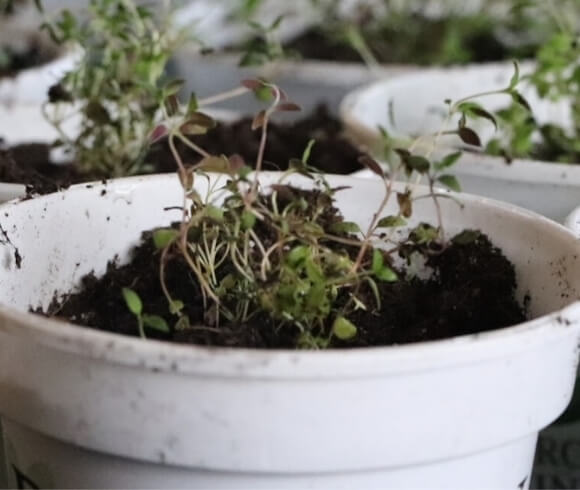
Thyme also makes for a wonderful addition along with other herbs as a steam to assist with opening the bronchial passageways.
Many of these treatments have been studied and are backed up with scientific proof of thyme’s benefits when using either fresh, dried, or oil.
THE PROOF’S IN THE THYME
Research has just begun to delve into this wonderous herb’s benefits. A few of the studies I came accross show just how promising this herb is when utilized in our home apothecaries.
- ANXIETY – I’m not sure about you, but anyone I know that grow’s this aromatic herb, knows just how therapeutic the scent can be. Studies are now being done using mice on the benefits of inhaling and breathing it’s aromatherapy with great success.
- INTESTINAL INFECTIONS – Thymol, one of thyme’s main properties, has been shown to “increase ileum Lactobacillus population and reduces effect of necrotic enteritis caused by Clostridium perfringes” according to this study.
- ORAL THRUSH – This in vitro study has shown “antifungal activity and mode of action of thymol and its synergism with nystatin against Candida species involved with infections in the oral cavity”.
INTERESTING NOTE: Thymol tincture is used as an active ingredient in many common, over the counter mouthwash brands, including Listerine.
- CLEANING – Yes, you heard right, cleaning. Disinfecting to be exact. Studies are now being conducted which show “antifungal activity of thyme (Thymus vulgaris L.) essential oil and thymol against moulds from damp dwellings” positive “long-lasting suppressive activity on moulds” when utilizing thyme essential oils.
These are only a few mentions of the positive & proven uses of thyme. Give it “thyme” and I’m sure there will be many more to add.
GROWING THYME FROM SEED
One question I always seem to be asked when growing herbs, in this case thyme, “Is it easy to grow from seed”? My answer? An emphatic YES!
Growing thyme from seed simply takes a bit of well, time. Herbs tend to be slow growing at best, so patience is definitely a virtue when growing thyme. Patience and a few tips to help you along the way.
GENERAL TIPS FOR GROWING THYME
These general growing tips extend to many herbs, and not just thyme. So take a read through and plant a few seeds. In no time you will be enjoying all the benefits thyme has to offer.
- LIGHT – The right amount of light is key when growing herbs. Especially when you are growing indoors. I utilize grow lights, full spectrum grow lights, when germinating and growing my thyme indoors. Thyme will need approximately 6+ hours of light exposure once they have germinated.
- SOIL – Thyme prefers sandy & dry soil conditions. They don’t like their roots soggy or bogged down by heavy soil.
- FERTILIZING – Thyme is not a heavy feeder. Utilize only a moderate to low amount of fish emulsion or liquid kelp now and again and it’s set to go.
- WEEDS – When growing thyme in your garden beds, keep thyme’s space weed-free, especially as young seedlings. Once a bit more established, mulching will assist in keeping the weeds for fighting for soil nutrients as well as keeping the lower branches free from soil splash.
SHOULD I SOAK THYME SEED BEFORE PLANTING
To soak or not to soak, that is the question. Some advise soaking herb seed for 12 to 24 hours but no more than 48 hours prior to planting. It’s said to speed germination up considerably.
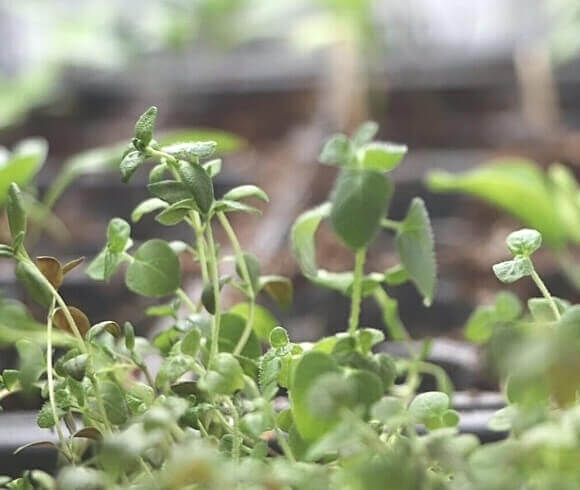
Personally? I’ve never seen a difference. And being the lazy gardiner that I am, it’s one less step I have to complete.
I would say, experiment. Keep records and see which method works best for you!
WHEN SHOULD YOU PLANT THYME
As with any gardening adventure, know your garden zone first. If you don’t already know yours, you can check your area by using this hardiness zone finder.
Thyme plants are hardy to USDA zones 5 to 9, but can survive zone 4 with a bit of added protection. This means your semi-evergreen (retains some of its leaves) plants will grow year-to-year! Love it when that happens 😊
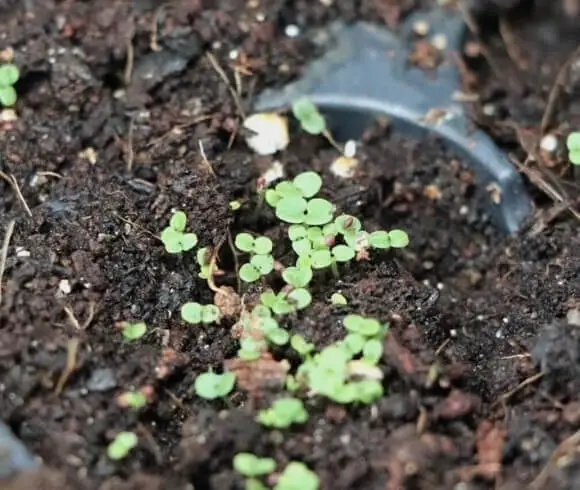
Once you know your garden zone you can then determine when the best time for planting into the garden or outside by simply reading your seed packet information. Further guidance as to reading & understanding seed packets may be helpful for you.
I always find it helpful to create a seed starting schedule come planting time. A seed starting schedule will help in determing the best date to sow your thyme. Organizing your gardening approaches is something that is of benefit to any gardener. Grab your copy of my garden management planner by clicking the image below 😊
Thyme will take an average of 14 to 28 days to germinate. When starting your thyme indoors, plan on providing an average temperature of about 70 F by germinating your thyme in a warm area of the home or via the use of a heat mat.
HOW TO GROW THYME FROM SEED
When growing thyme you have a few options. One of those options is growing it from seed.
Follow these simple steps to growing thyme from seed & you’ll be enjoying your own homegrown before you know it!
- Scatter your seeds (when growing thyme the seed are extremely small, so sow a plethora of seed in each cell or growing pot) on top of your container filled with sterilized growing medium of choice and lightly cover with medium
- Water thoroughly (but make sure whatever container you are using has drainage holes)
- Cover with either plastic wrap, or utilize a “greenhouse” propogation kit
- Place the tray or pot on a heating mat or in a warm location to germinate
- Germination should take approximately one week to 12 weeks
- Once thyme seedlings are about 4 inches in length, transplant into larger pot if needed or directly into your garden bed. I’ve created a video on how I do just that below.
- When planting into your garden bed, space the plants a good 9 inches apart. For growing in field production, space 12-18 inches apart in rows 3 feet apart
GROWING THYME FROM CUTTINGS
Another option for growing thyme is by growing it from cuttings off a mature plant. Many will opt for this option due to thyme’s lengthy germination period.
If you are fortunate enough to have a mature plant come springtime, take a few cuttings and grow from there. To cut your time, simply snip a a node on the stem where a leaf attachs to the stem. Remove the lower leaves, dipping the end in rooting hormone if you like, and push the stem into soil consisting of moist soil mix, vermiculite, or perlite.

Keep the cuttings in a warm spot and always slightly moist. Check for roots after once month, but don’t be surprised if the cuttings take a couple months to begin to root.
Alternatively, you can root your thyme cuttings in water. To do this, again, its best to do in the spring, use only the green new growth of the stem (brown, older stems do not root as easily when in water), cutting just below a leaf node, remove the leaves, and place in a container of water.
Make sure there are no leaves in the water itself, and the container is placed in a warm area with plenty of indirect light.
Depending on the health of the plant, rooting signs can begin to show within a week to a few weeks. Prior to transplanting into soil, begin to harden the roots by dropping a few small pebbles on the roots themselves each day for a week.
DIVIDING ESTABLISHED THYME PLANTS
You can divide your established thyme plants come spring. Dividing may be the simplest of all ways to easily expand the number of thyme plants you have in your herb garden.
To divide, dig up an established plant and divide the plant into sections. Be sure to have ample roots attached to each plant section, and replant.
I like to soak my divisions in a solution of “brown water” or liquid kelp diluted in water for a few minutes prior to replanting. They appreciate the little boost of nutrients they receive.
LAYERING THYME
Lastly, another option for developing an existing thyme plant in the garden is to layer it. This is a method I have yet to try, therefore, I cannot attest to how easy this method is or to the success rate of this method. But certainly something to try. I do love a gardening experiment😉
To layer your thyme plant, take a branch of your plant, remove the leaves, and bend it down to the ground. Cover the bare stem with soil & water lightly.
To encourage rooting, cut a small lesion just below a node on the bent stem that is buried. The bent stem will receive it’s nutrients from the mother plant until roots are established. Once the roots have established, you can then remove the new plant from the mother and replant.
HARVESTING & STORING THYME
To harvest your thyme, they say it’s best to do so just prior to flowering by cutting off the top 3-6 inches and leaving at least 2-3 inches of plant.
Being the rebel gardener that I am, I don’t buy into that theory. Once my thyme plant has been established, I find them very hardy, and snip only what I need to use in my culinary needs through the growing season. I use the flowers as well in my cooking.
Thyme’s flowering season attracts a plethora of pollinators! Letting the plant flower encourages active garden synergy to say the least!
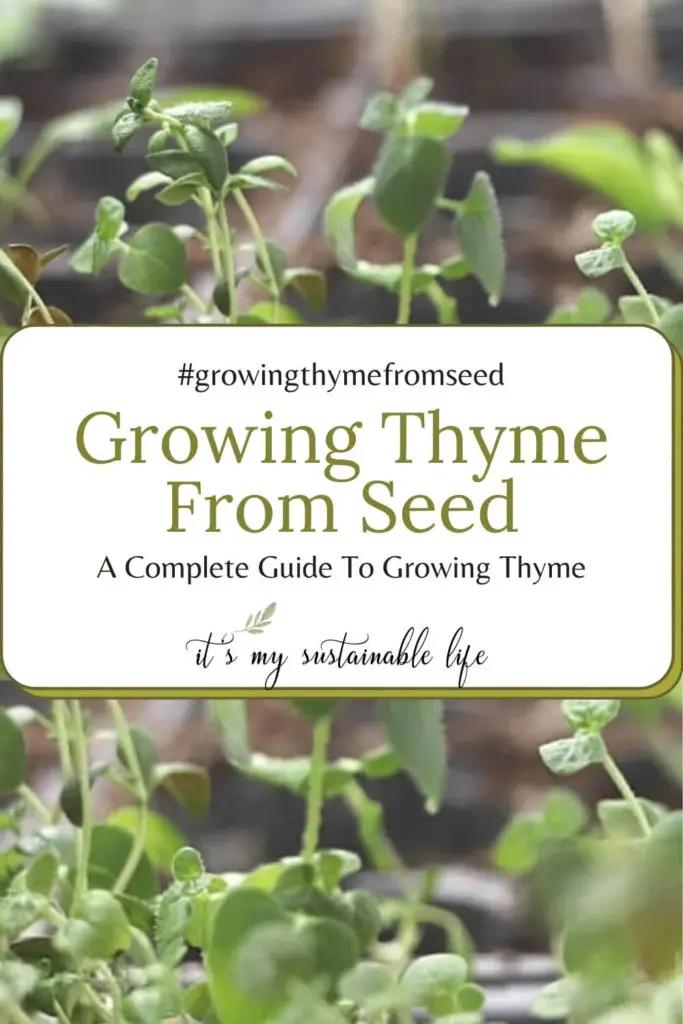
I will say, if I need to harvest a healthy dose of thyme for my medicinal needs, I do so in the first growth spurt of the plant. To harvest for long-term storage & medicinal uses, trim as described above, leaving at least 2-3 inches of plant.
Don’t wash the cuttings as this will remove a fair amount of the essential oils that are so beneficial. Fresh thyme may be stored in the refrigerator in an air-tight container for a couple of weeks.
To dry your thyme, lay out on a drying screen or hang by tying small bundles and allow to completely dry in a well ventilated area.
To store your dried thyme, remove the dried leaves from the stem and store in an air-tight container. Properly dried thyme will retain it’s flavor for a few years.
Alternatively, you can freeze your thyme if you choose.
Growing thyme from seed is an easy way to enjoy all the benefits this lovely herb has to offer.
How will you be growing your thyme?
Love, Light, & Laughter ~


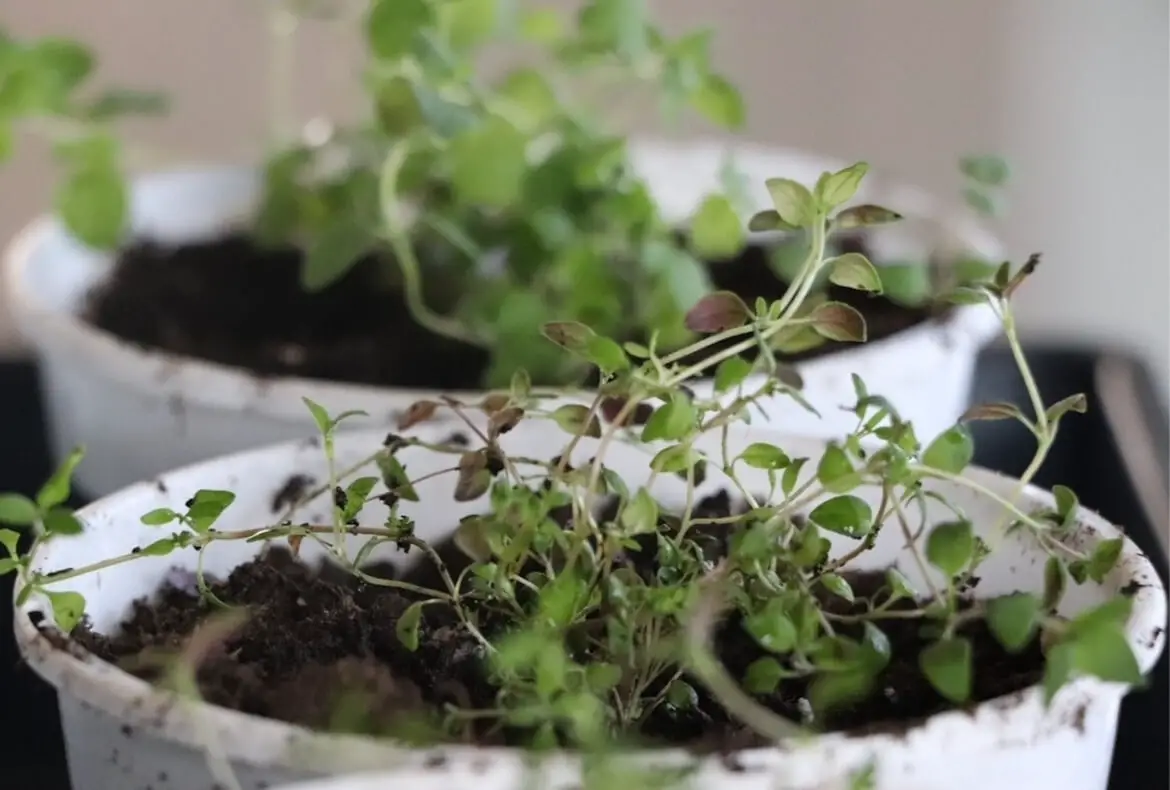


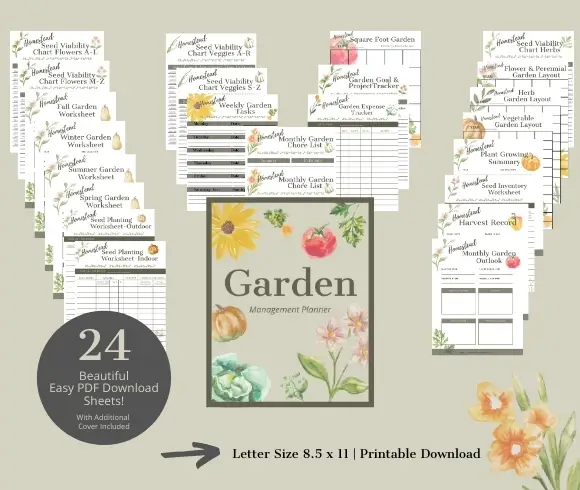
22 comments
Great information! I’ve always wanted to grow fresh herbs.
I love thyme! It’s one of my favorite herbs. I have healthy, established plants in the herb garden so I’ve not tried starting more from seeds. I’ll have to try layering though, just for the fun of it!
I like Thyme but have never tried growing it in my little herb garden. May need to give it a shot! Thanks for all the great info!
I never knew the benefits of thyme, other than it smells good! We grew it from a seed last spring and it did well inside. It didn’t make it when we transferred it outside though. 🙁 Will have to try again this year!
I love thyme. In recipes or as a plant. It’s pretty and the smell is awesome. And who knew it had so many uses!
I loved reading the historic uses of thyme, so interesting. So many great benefits in our day too!
It’s amazing how God provides us with such useful plants and I like it that it’s easy to grow.
Thyme is one of my all thyme favorites! We have it growing on my kitchen window sill. My husband is the one with the green thumb. Great article.
This is great! We will start doing the tea for colds and such!
I love thyme but had trouble keeping it alive for years. I finally figured it out and had a plant that lasted for three years before we moved and had to leave it behind.
Just ordered my Kitchen Herb garden seeds! Thank you!
Yay! Congrats on your shop. You do a fantastic job so I am expecting HUGE success!
Thank you!
Besides growing thyme, I appreciate all of the other info you shared on uses, etc.
I had no idea you should use a heat mat with the seeds. Thank you!
I love thyme! I forgot to start their seeds this year but there’s always next year!
Great information. I loved reading about the medicinal uses for thyme. I also like the idea of using it in a tea instead of just in cooking. Thank you!
I love adding thyme to everything, It has the best flavor! I have grown it before and it is so nice to always have it available.
Do thyme plants come back year after year, or do they need to be planted annually?
Most thyme plants are hardy to zones 5 to 9, but with added protection it can survive zone 4. So it really depends on where you are living. Should you not be in those zones, optionally, you could bring it in to overwinter in pots.
Hope that helps a bit!
Thyme is one on my favorite herbs! Thank you for sharing your tips and advice for a healthy batch of thyme.. I love cooking with it!
Thank you for sharing this article. I love thyme an I grow lots of it.
Excellent article.
Maria